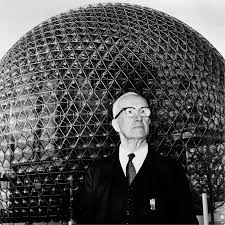n my youth I suffered from tightness along my spine.
After I learned the Rotational Spinal Wave it was gone.
Today I share it with you.
Use it to get rid of muscular tightness in the back!
Incl. a 6-Week Practice Plan.🧵
After I learned the Rotational Spinal Wave it was gone.
Today I share it with you.
Use it to get rid of muscular tightness in the back!
Incl. a 6-Week Practice Plan.🧵

Why it works:
Sitting too thanks to school, university, work or a sedentary lifestyle compresses your vertebra.
These effective rotational spinal waves help you to lengthen the spine again.
This plan is to made over the course of 6 weeks.
Sitting too thanks to school, university, work or a sedentary lifestyle compresses your vertebra.
These effective rotational spinal waves help you to lengthen the spine again.
This plan is to made over the course of 6 weeks.
Week 1-3: Head Leading - Patterning
Start in a bilateral stance.
The motion begins with the head.
Rotate it to the back.
Shoulders and hips stay straight till the face looks back.
Then the shoulders and ribcage follow.
At the end add the hips.
Repeat in the other direction.
Never break the sequence.
Separate the section of the spine as good as possible.
Do 5-20 minutes
Start in a bilateral stance.
The motion begins with the head.
Rotate it to the back.
Shoulders and hips stay straight till the face looks back.
Then the shoulders and ribcage follow.
At the end add the hips.
Repeat in the other direction.
Never break the sequence.
Separate the section of the spine as good as possible.
Do 5-20 minutes
Week 1-3: Hip Leading - Patterning
Start in a bilateral stance.
The motion begins with the hip.
Rotate it to the back.
Shoulders and head stay straight till the hip is turnedThen the ribcage & shoulders follow.
At the end add the head. Repeat in the other direction.
Never break the sequence.
Separate the sections of the spine as good as possible.
Do 5-20 minutes
Start in a bilateral stance.
The motion begins with the hip.
Rotate it to the back.
Shoulders and head stay straight till the hip is turnedThen the ribcage & shoulders follow.
At the end add the head. Repeat in the other direction.
Never break the sequence.
Separate the sections of the spine as good as possible.
Do 5-20 minutes
Week 4-5: Head Leading - Wave
Apply what you learned in the patterning.
Keep it as fluid as possible without losing the quality of the sequence.
Do 5-20 minutes
Apply what you learned in the patterning.
Keep it as fluid as possible without losing the quality of the sequence.
Do 5-20 minutes
Like this tutorial?
It is part of the Spine Mobility Mini Course.
Discover everything you need to keep your spine mobile and free of pain here:
movementpractice.gumroad.com/l/spinemobility
It is part of the Spine Mobility Mini Course.
Discover everything you need to keep your spine mobile and free of pain here:
movementpractice.gumroad.com/l/spinemobility
Week 4-5: Hip Leading - Wave
Apply what you learned in the patterning.
Make it as fluid as possible, but don't lose the quality of the sequence.
Apply what you learned in the patterning.
Make it as fluid as possible, but don't lose the quality of the sequence.
Week 6: Rotational Wave - Head Hip Complex
Mix the head leading and hip leading variation.
Always keep moving and look for a good sequentiality of the pattern.
Mix the head leading and hip leading variation.
Always keep moving and look for a good sequentiality of the pattern.
If you want to see more like this in the future, make sure to bookmark and comment on the first post of this thread.
Lets get pain free together,
Jakob - MoD
Lets get pain free together,
Jakob - MoD
https://x.com/moveorperish/status/1983975170001043721
• • •
Missing some Tweet in this thread? You can try to
force a refresh













